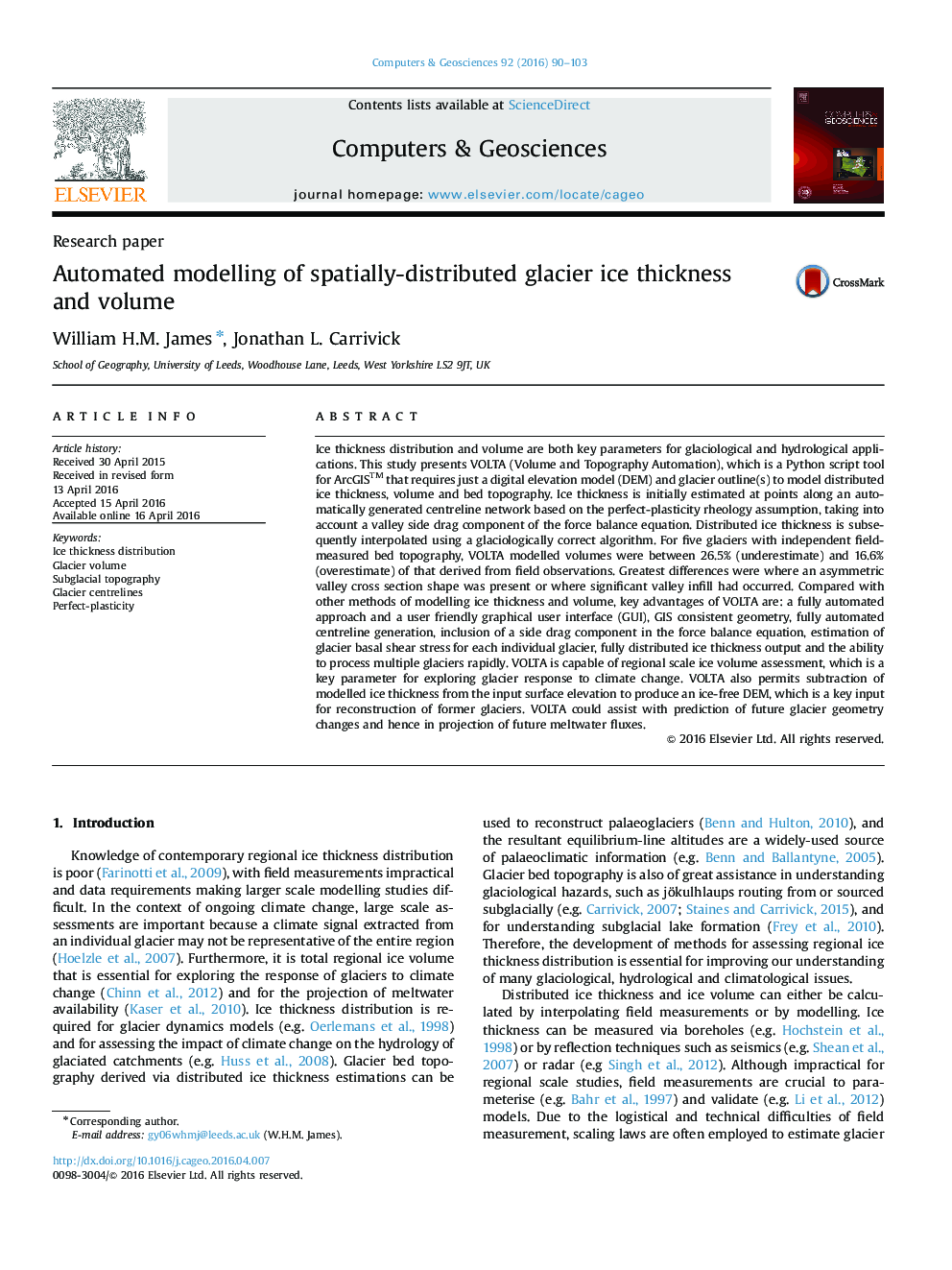| Article ID | Journal | Published Year | Pages | File Type |
|---|---|---|---|---|
| 506909 | Computers & Geosciences | 2016 | 14 Pages |
•The VOLTA model is presented to estimate ice thickness distribution and volume.•The model requires just glaciers outlines and a DEM as inputs.•VOLTA can rapidly estimate volume and bed topography for multiple glaciers.•The model was tested against glaciers with independent field based observations.•Modelled volumes were between 26.5% (underestimate) and 16.6% (overestimate).
Ice thickness distribution and volume are both key parameters for glaciological and hydrological applications. This study presents VOLTA (Volume and Topography Automation), which is a Python script tool for ArcGISTM that requires just a digital elevation model (DEM) and glacier outline(s) to model distributed ice thickness, volume and bed topography. Ice thickness is initially estimated at points along an automatically generated centreline network based on the perfect-plasticity rheology assumption, taking into account a valley side drag component of the force balance equation. Distributed ice thickness is subsequently interpolated using a glaciologically correct algorithm. For five glaciers with independent field-measured bed topography, VOLTA modelled volumes were between 26.5% (underestimate) and 16.6% (overestimate) of that derived from field observations. Greatest differences were where an asymmetric valley cross section shape was present or where significant valley infill had occurred. Compared with other methods of modelling ice thickness and volume, key advantages of VOLTA are: a fully automated approach and a user friendly graphical user interface (GUI), GIS consistent geometry, fully automated centreline generation, inclusion of a side drag component in the force balance equation, estimation of glacier basal shear stress for each individual glacier, fully distributed ice thickness output and the ability to process multiple glaciers rapidly. VOLTA is capable of regional scale ice volume assessment, which is a key parameter for exploring glacier response to climate change. VOLTA also permits subtraction of modelled ice thickness from the input surface elevation to produce an ice-free DEM, which is a key input for reconstruction of former glaciers. VOLTA could assist with prediction of future glacier geometry changes and hence in projection of future meltwater fluxes.
